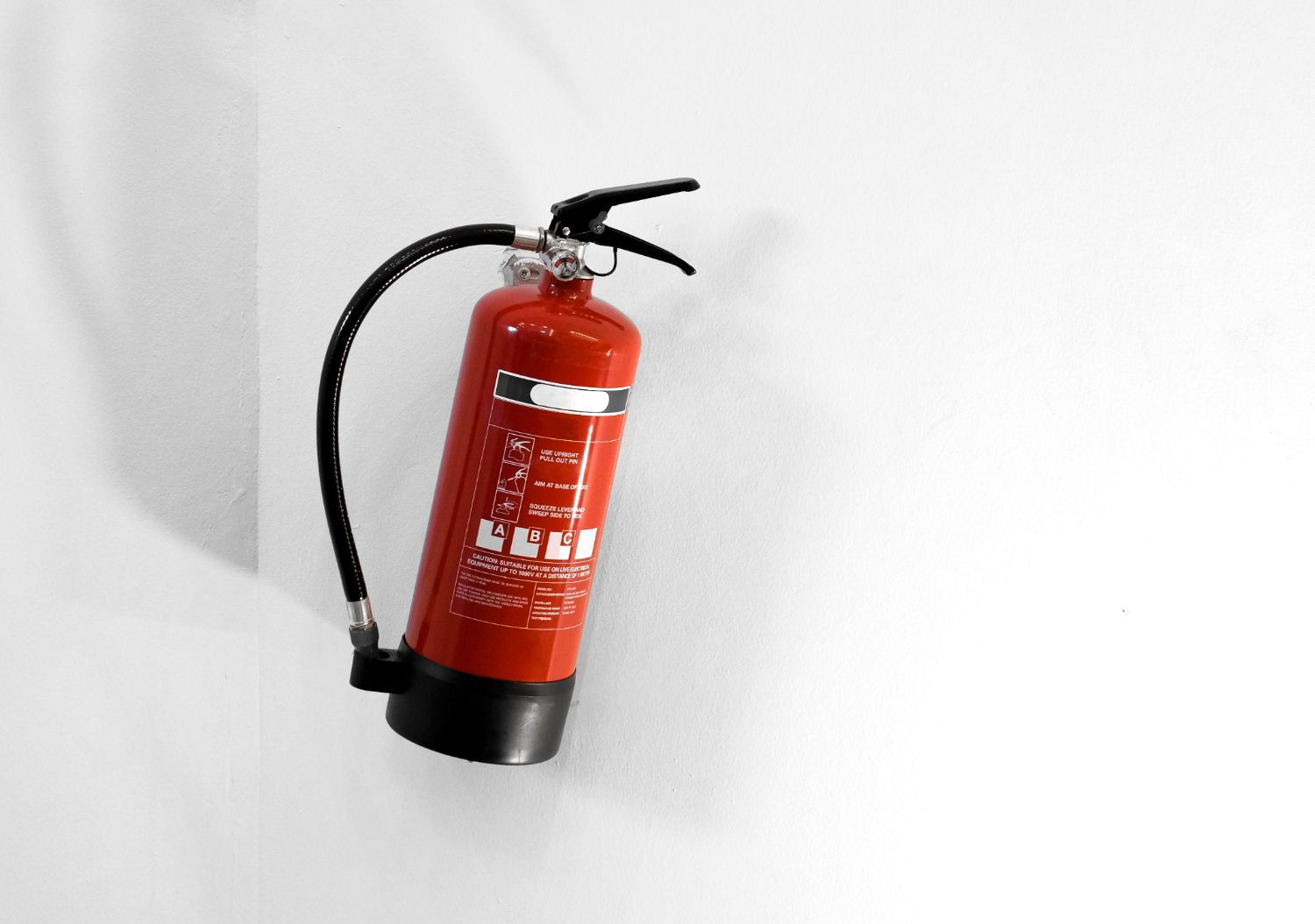Board of Fire Commissioners, Fire District 3,
Township of Old Bridge
Board of Fire Commissioners
Fire District 3
Township of Old Bridge
Building a Fire-Safe Home: The Ultimate Guide to Fire-Resistant Materials

When it comes to building or renovating a home, one of our top priorities should be fire safety. On that note, fire-resistant building materials are designed to resist burning and withstand heat, offering crucial minutes for response teams to act and families to find safety during a fire.
Understanding what constitutes fire-resistant building materials is not just about complying with building codes; it’s about actively protecting your property and loved ones from the unpredictable nature of fire.
These materials can drastically slow the spread of flames and reduce smoke levels, potentially saving lives and minimizing damage until help arrives. By incorporating these materials into your home, you contribute to a safer community and demonstrate responsible homeownership.
Let's take a deeper dive into what fire-resistant building materials are available, why they are indispensable in modern home construction, and how you can integrate them effectively. Each choice you make builds a stronger defense against potential fires, ensuring that your haven remains safe for you and your family.
With this forward-thinking approach, we aim to equip you with knowledge and resources to make informed decisions about your home’s construction and safety features.
What Are Fire-Resistant Building Materials?
Fire-resistant building materials are designed to prevent the spread of fire and provide more time for evacuation and response efforts. These materials can withstand high temperatures much longer than standard building materials.
During a fire, materials that are considered non-combustible don't fuel the flames, making them integral to modern construction standards that prioritize safety along with design and comfort. Common examples include fire-resistant glass for windows, concrete, gypsum, and specific types of treated wood that are formulated to resist ignition and slow down the spread of fire through structural barriers.
It’s important for us to recognize that no material is completely fireproof, but many can be classified as fire-resistant. This classification means that the materials have been tested under controlled conditions to check how effectively they can resist fire, or limit the spread of flames. This is measured in terms of fire ratings—the higher the rating, the longer the material can withstand fire exposure.
These ratings help us gauge how much risk is mitigated during a construction project, ensuring that safety remains a paramount consideration in all our building endeavors.
Key Benefits of Using Fire-Resistant Materials in Home Construction
The use of fire-resistant materials in building homes offers manifold benefits, significantly improving the overall safety and durability of a structure. Firstly, these materials provide crucial time during a fire incident, time that can be used to safely evacuate occupants and allow firefighters to control the situation effectively. This not only helps in saving lives but also minimizes potential damage to property.
Secondly, structures built with fire-resistant materials typically experience lower insurance costs. Insurance companies often recognize the reduced risks associated with such buildings and may offer premiums at reduced rates.
Investing in fire-resistant construction enhances the longevity of the building. Structures capable of withstanding high temperatures without deteriorating quickly contribute to fewer maintenance needs and reduced reconstruction costs over time.
As safety regulations become stricter and more comprehensive, using fire-resistant materials ensures compliance with local building codes and regulations, often simplifying the legal and inspection processes associated with new constructions and renovations.
Integrating fire-resistant materials protects investments and exemplifies responsible building practices that prioritize community safety and wellness. As we continue to support safe building practices, the inclusion of these materials in home construction remains at the forefront of our recommendations for anyone looking to build or renovate their home.
Top Fire-Resistant Materials Every Homeowner Should Consider
When planning to build or renovate your home, choosing the right fire-resistant materials can significantly enhance your home’s safety. Start by considering these top materials that are known for their fire-resistant properties:
1. Gypsum board: Often used for interior walls, gypsum board is non-combustible and effectively protects structural elements from fire for up to four hours.
2. Concrete: An excellent material for fire resistance, concrete does not burn, cannot be set on fire, and it does not emit toxic fumes when exposed to fire.
3. Glass blocks: These are not only stylish but also fire-resistant. They can withstand exposure to flame and restrict the transfer of heat.
4. Brick: A traditional favorite, brick is excellent at resisting fire. It is highly durable and does not combust, making it ideal for external walls.
5. Fire-rated steel: Especially used in door frames and doors, fire-rated steel can resist heat and withstand fire for a specific period, typically noted by its fire rating.
These materials are not only effective in slowing down the spread of fire but also add to the aesthetic and functional value of your home. By incorporating these into your construction or renovation plans, you enhance your home’s resilience against fires.
Tips for Integrating Fire-Resistant Materials into Your Home
Integrating fire-resistant materials into your home requires both strategic planning and understanding of where these materials will have the most impact. Here are some actionable tips to help you incorporate these materials effectively:
- Start from the outside: Use fire-resistant materials like bricks, tiles, and stone on the exterior structures of your home, including siding and roofing.
- Focus on critical areas: Install fire-resistant doors and windows to slow down the spread of fire. Do not overlook areas like attics, basements, and garages, where fires can start unnoticed.
- Interior finishing: Opt for gypsum boards for your walls and ceilings. These materials not only support fire resistance but also provide a good base for interior decor.
- Inspect and replace: Regularly inspect your home for areas where fire resistance could be improved. Old materials can wear down and lose their resistance over time, so replacement may become necessary.
By following these tips, you can significantly increase your home’s defense against fires while maintaining a beautiful and functional living space.
Fire Safety at Home: Choosing the Right Fire-Resistant Building Materials
Enhancing your home with fire-resistant materials is a proactive step towards safeguarding your property and loved ones from unforeseen fire incidents. At OBFD3, we understand the importance of community safety and are committed to providing you with resources and information to make informed decisions about fire protection in your home.
Whether you are building a new house or upgrading your current home, consider employing these fire-resistant materials and strategies to enhance your home’s safety. The peace of mind that comes from knowing your home is well-equipped to withstand a fire is invaluable.
Remember, fire safety starts with awareness and preparedness. Reach out to us at OBFD3 today to learn more about fire-resistant materials and other ways to protect your home from fire hazards. Together, let’s keep our community safe and secure with our comprehensive
fire department service in New Jersey.






Phone: 732-723-1124 | Email: firedistrict3@obfd3.com
Address: 913 Englishtown Road Old Bridge, New Jersey 08857
We are closed daily from 12 Noon to 1pm for lunch
© 2023 All Rights Reserved | Board of Fire Commissioners, Fire District 3, Township of Old Bridge
All Rights Reserved | Board of Fire Commissioners, Fire District 3, Township of Old Bridge









